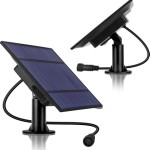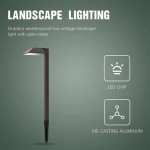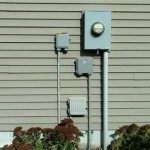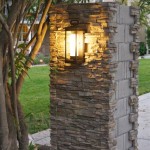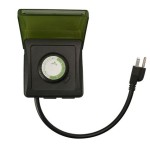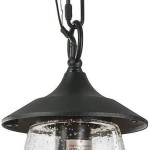Installing Outdoor Lighting: A Comprehensive Guide
Outdoor lighting plays a crucial role in enhancing the aesthetic appeal and functionality of any outdoor space. From illuminating pathways and walkways to highlighting architectural features and creating a welcoming ambiance, well-designed outdoor lighting can transform a yard or patio into a comfortable and inviting environment. Installing outdoor lighting involves a combination of planning, selecting the right fixtures, and adhering to safety guidelines. This comprehensive guide provides a step-by-step approach to successfully installing outdoor lighting.
1. Planning and Design
The first step in installing outdoor lighting is to carefully plan and design the lighting scheme. This involves considering factors such as the purpose of the lighting, the desired ambiance, and the existing landscape features. For instance, path lighting should provide adequate illumination for safe passage, while accent lighting can be used to highlight trees, shrubs, or architectural details. It is essential to determine the desired lighting levels, the types of fixtures to be used, and the overall layout of the lighting system.
To ensure a cohesive and aesthetically pleasing lighting design, it is recommended to create a rough sketch or diagram of the outdoor space. This plan should include the location of each fixture, the type of light source, and the desired lighting effect. It is also helpful to consider the existing landscape features, such as trees, shrubs, and water features, and incorporate them into the lighting design. The overall goal is to create a balanced and harmonious lighting scheme that enhances the beauty and functionality of the outdoor space.
2. Choosing the Right Fixtures
Selecting the right fixtures is crucial for achieving the desired lighting effects and maintaining the aesthetic appeal of the outdoor space. A wide variety of outdoor lighting fixtures are available, each with unique characteristics and functionalities. Some common types of outdoor lighting fixtures include:
- Path Lights: These fixtures are designed to illuminate walkways and pathways, providing safety and guidance at night.
- Accent Lights: Used to highlight specific features, such as trees, shrubs, or architectural details, accent lights create visual interest and add depth to the landscape.
- Flood Lights: Providing broad illumination, flood lights are suitable for illuminating large areas, such as driveways, patios, and gardens.
- Wall Sconces: These fixtures are typically mounted on walls and provide ambient lighting for patios, decks, and porches.
- Post Lights: Ideal for illuminating walkways and driveways, post lights are mounted on poles and offer a classic and elegant look.
When choosing outdoor lighting fixtures, it is important to consider factors such as the style of the home, the size and shape of the outdoor space, and the desired lighting effects. For example, traditional homes might benefit from post lights or wall sconces with classic designs, while modern homes might be better suited to minimalist fixtures with sleek lines. Additionally, the materials used to construct the fixtures, such as aluminum, steel, or bronze, should be weather-resistant and durable.
3. Installation Procedures
Once the planning and design phase is complete, the next step is to install the outdoor lighting fixtures. This involves the following steps:
- Mark the locations: Using stakes or spray paint, mark the locations for each fixture on the ground or walls.
- Run the wiring: If necessary, run electrical wiring from the electrical panel to the fixture locations. This may require digging trenches or using existing conduit.
- Mount the fixtures: Securely mount the fixtures using appropriate mounting brackets or screws.
- Connect the wiring: Connect the wiring to the fixtures, ensuring that the connections are properly insulated and secured.
- Test the lights: Turn on the lights and check that all fixtures are working properly.
During the installation process, it is crucial to adhere to safety precautions and follow all applicable electrical codes. Hiring a qualified electrician to handle the wiring and electrical connections is highly recommended, especially for complex installations. Additionally, ensure that all wires are properly insulated and protected from moisture and damage.
Installing outdoor lighting is a rewarding project that can significantly enhance the functionality and aesthetic appeal of any outdoor space. By following these steps, homeowners can create a welcoming and inviting environment that extends the enjoyment of their property well into the evening hours.

Outdoor Lighting Installation Tips Instructions Ahs

Outdoor Lights Installation Security Lighting 4 Service Pros

Outdoor Lighting System How Long Does It Take To Install

How To Install Outdoor Lighting And Diy Family Handyman

Why You Need A Professional When Installing Outdoor Lighting Augusta Green Sprinklers Inc

How To Install Outdoor Wall Lighting Light Fixtures Mr Electric

Installing Outdoor Landscape Lighting Home Repair Tutor

Light Backyard Outdoor Lighting Installation Ashburn Va

Installing Outdoor Lighting In Fall And Winter Limelight

Louie Lighting Blog Low Voltage Landscape Install
Related Posts


